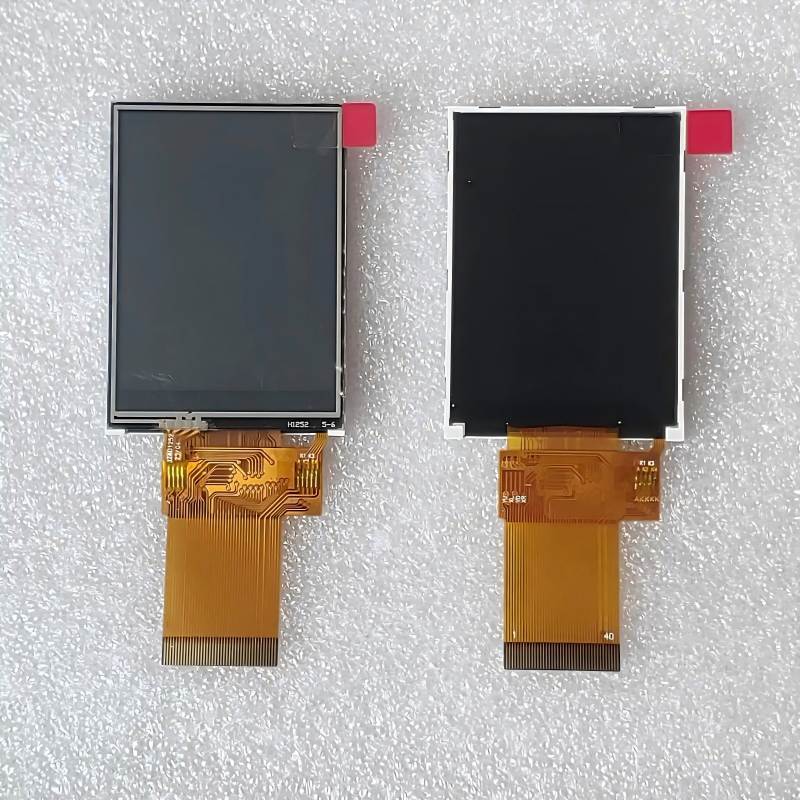Unveiling the TFT display module: the visual engine of the smart world
Abstract: This article deeply analyzes the technical principles and coordination mechanisms of the five core components of the TFT display module – TFT LCD screen, driver chip, backlight module, touch screen and control circuit board. Through 6 core arguments and authoritative data support, it reveals its key role in scenarios such as smartphones, automotive electronics, and industrial control, and looks forward to how cutting-edge trends such as Mini-LED backlight and flexible display will reshape the future of human-computer interaction.

1. TFT LCD screen: a precise canvas of pixel matrix
As the “visual cortex” of the module, the TFT LCD screen accurately controls the light on and off of each sub-millimeter pixel through a thin-film transistor array. Its advantages are:
- High contrast: up to 1500:1 (such as high-end mobile phone screens), making black deeper and colors more vivid.
- Fast response: The grayscale response time is as low as 5ms (DisplaySpecifications data), effectively eliminating dynamic afterimages.
- Wide viewing angle technology: IPS/VA panel achieves 178° viewing angle, adapting to multi-scene viewing needs.
Technology essence: TFT array is like a micro switch, adjusting the deflection angle of liquid crystal molecules through voltage, controlling the degree of backlight penetration, and finally forming an image (Nature Photonics Principles).
2. Driver chip: translator of digital signals
Driver chip undertakes the core signal conversion task:
- Source driver chip (Source Driver): Convert digital video signals into analog voltages to accurately control the brightness and color level of each column of pixels.
- Gate driver chip (Gate Driver): Activate TFT transistors by row scanning to achieve row-by-row refresh (60Hz/120Hz high refresh screen has become mainstream).
- Integration trend: Novatek’s TDDI chip integrates touch and display drivers, improves efficiency and reduces module thickness (IEEE paper analysis).
3. Backlight module: the energy source of light and shadow magic
The liquid crystal itself does not emit light, and the backlight module provides uniform lighting:
- LED backlight dominates the market: accounting for more than 95% (TrendForce report), because of its energy saving (40% less power than CCFL), long life (50,000 hours+) and support for local dimming (Local Dimming).
- Key role of optical film: Brightness enhancement film (BEF), diffusion film, and prism film work together to improve brightness uniformity to more than 85% and reduce light leakage.
- Technology frontier: Mini-LED backlight uses thousands of micron-level LEDs to achieve a million-level contrast ratio (such as iPad Pro), becoming a new benchmark for high-end displays.
4. Touch screen (optional): the bridge of human-computer interaction
The touch layer gives the display “perception”:
- Mainstream capacitive touch: supports multi-touch (10 points +), surface hardness reaches Mohs level 7 (Apple super ceramic panel), strong scratch resistance.
- Structural evolution: from external (G/G, GFF) to embedded (On-Cell/In-Cell), significantly reducing the thickness of the screen (such as Samsung AMOLED screen).
- Emerging technology: Force Touch can sense the pressure and expand the interaction dimension (Synaptics solution of touch IC manufacturer).
5. Control circuit board: the nerve center of the module
The PCB board integrates key control units:
- Main control chip (TCON): processes input signals (LVDS/eDP interface) and generates timing control instructions.
- Power management chip (PMIC): Multiple voltage outputs (±5V, 15V, etc.) to ensure stable power supply for each component, with power consumption fluctuations less than 5%.
- Interface expansion: Supports high-speed transmission protocols such as MIPI-DSI and HDMI to meet the bandwidth requirements of 8K video.
6. Collaboration mechanism: The victory of system-level optimization
The deep collaboration of the five major components determines the final performance:
- Timing precision matching: The clock synchronization error between the driver chip and TCON must be <0.1% to avoid screen tearing.
- Energy efficiency balance: PMIC dynamically adjusts the backlight voltage and combines with LED driver IC to achieve a dark night mode as low as 1nit.
- Structural innovation: COF (Chip on Film) packaging binds the driver IC to a flexible circuit board to achieve an extremely narrow border design for the “full screen” mobile phone.
Összefoglaló:
TFT display module is a symphony of optics, semiconductors, and materials science – from the pixel-level control of TFT LCD screens to the precise signal translation of driver chips; from the energy supply of backlight modules to the interactive perception of the touch layer, the control circuit board is responsible for the overall situation. As Mini-LED backlights improve the contrast limit and flexible substrates (such as Samsung Flex Magic) break through the boundaries of form, this complex system will continue to promote the upgrade of the visual experience of smart terminals. When the fingertips lightly touch the screen to light up, we touch not only the image, but also the wisdom of human precision engineering.
The future has arrived: According to DSCC’s forecast, the global TFT panel market will reach US$187 billion in 2025, and behind it is the majestic power of collaborative innovation of tens of millions of modules – they are not only windows to information, but also doors of light connecting the physical world and the digital universe.
